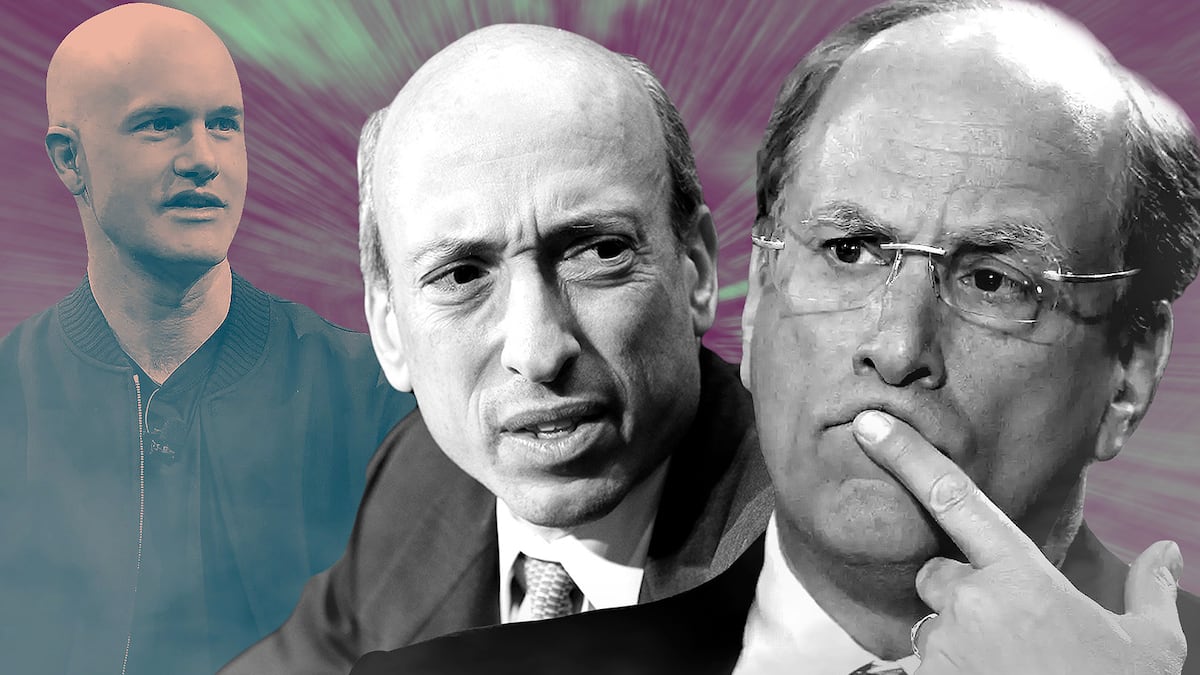- From regulatory action to slumping trading volumes, Coinbase faces a litany of issues.
- The crypto exchange’s pricing model poses another issue.
- Coinbase’s Bitcoin business could be adversely impacted by a spot Bitcoin ETF approval in the US.
Most brokerages — including Robinhood, Charles Schwab, and TD Ameritrade — charge investors nothing to buy and sell assets on their sites.
Yet Coinbase, the largest listed cryptocurrency exchange in the US with $128 billion in assets, hasn’t joined the zero-commission club. It charges customers anywhere from 0.6% to 3%, according to its public financial disclosures. Moreover, the company maintains a complex fee model that’s tough for investors to understand, say analysts.
Coinbase’s approach may be a vulnerability as the crypto market shows signs of shifting into a vibrant new growth phase. Bitcoin is up 57% this year and hopes are mounting that a spot price exchange-traded fund may soon be green-lit.
NOW READ: BlackRock’s aim to make crypto cheaper should scare Coinbase
With Wall Street giants such as BlackRock, Fidelity, and ARK Invest angling to bring out the hotly anticipated Bitcoin ETF, Coinbase may be left behind due to its pricing practices.
While pricing on spot Bitcoin ETFs is still murky, “it’s a good or reasonable bet to assume that pricing would be lower than what Coinbase currently charges retail customers to trade Bitcoin on the app,” Ryan Coyne, an analyst at Mizuho told DL News.
It is possible that investors, emboldened by a new bull market, may overlook Coinbase’s cost approach.
Led by co-founder Brian Armstrong, the exchange’s brand has become so synonymous with the crypto market over its 11-year history that even the US Securities and Exchange Commission’s legal action to effectively shut down the firm hasn’t dampened investors’ enthusiasm. Coinbase’s stock has soared 132% this year.
NOW READ: Coinbase short sellers raked in $480m in August — but bears are ‘deep in the red’ this year
Still, Coinbase’s decision to not offer customers a standard fee is a head-scratcher in an industry that prides itself on simplicity and transparency.
The exchange uses a number of variables to determine fees. These include an investor’s payment method, the size of the order, market conditions, and the customer’s location, a Coinbase spokesperson told DL News via email.
“In addition, from time to time we test changes to our fees and/or spread,” said the representative, “which sometimes will result in broader changes rolled out across different regions.”
Coinbase offers a couple of alternative pricing programmes for customers. Under its Coinbase Advanced offering investors can pay zero in fees on trading “stable pairs,” which is when a cryptocurrency price is pegged to an “external reference” like the US dollar. Sophisticated investors often employ this type of tandem to manage risk.
The exchange’s Coinbase One service is designed for highly active investors. For $29.99 a month, investors get to trade up to $10,000 for zero fees.
Yet most investors wind up paying more fees. Based on a formula Coinbase analysts call its “retail take rate.” It’s measured by dividing trading revenue on the exchange by trading volume.
NOW READ: Coinbase earnings flash warnings that market share may shrink further
In the second quarter, Coinbase pocketed $310 million from retail trading, on total retail volumes of about $14 billion. This means that the take rate was about 2.2%, according to analysts at investment bank Mizuho.
This jumped from 1.7% in the first quarter, and Mizuho said this increase could accelerate market share losses on the retail front for the exchange.
It appears that the inscrutable model will remain in place as major rivals stand in waiting – and it’s not just ETF issuers. Traditional players threaten the exchange’s market share.
Eligible Fidelity customers can buy Bitcoin and Ethereum with zero fees and a 1% spread. Coinbase charges $29.99 a month for a similar service, with the spread included.
Another threat to the exchange is the likelihood of a spot Bitcoin exchange-traded fund coming to market.
Ever since ETFs became a staple in the retirement accounts of tens of millions of American workers 25 years ago, they have become the go-to option for investors.
They’re cheap — Vanguard’s fund based on the S&P 500 Index has an expense ratio of 0.04% — and they’re easy to access. Plus, the ETF market is highly liquid and operates under clear regulatory guidelines, two elements that are often lacking in crypto.
Eyeing this opening, BlackRock’s Larry Fink said in June that the world’s biggest asset management firm plans to “democratise crypto and make it cheaper.”
BlackRock’s embrace of Bitcoin as a new asset class with a place in the average investor’s portfolio would be a game-changer. ETF approval is looking more likely than ever, crypto analyst Noelle Acheson wrote on August 30.
Bitcoin ETFs pose a threat to Coinbase’s Bitcoin business, analysts say. If investors can buy exposure to Bitcoin with the same ease and comparable costs as the S&P 500, Coinbase may come under pressure.
NOW READ: Base frenzy fuels Coinbase revenue outlook amid rising fees and shrinking market share
Under Armstrong, Coinbase has proven to be a nimble and resilient firm. It’s already making moves to diversify its top line.
Coinbase could also lower its prices to compete with new entrants. That would dilute its profit margin, as would ramping up sales and marketing efforts to open new accounts at a greater clip, Coyne told DL News.
TD Cowen rates Coinbase stock as an “underperform,” which means it’s expected to not keep pace with the market. The crypto exchange’s total trading volume in 2023 would need to exceed $412 billion in the investment bank’s bull case.
Volumes reached $237 billion in the first half of the year, falling 36% between the first and second quarters, according to quarterly filings.
Adam Morgan McCarthy is DL News’ London-based Markets Correspondent. Got a tip? Reach out at adam@dlnews.com.
